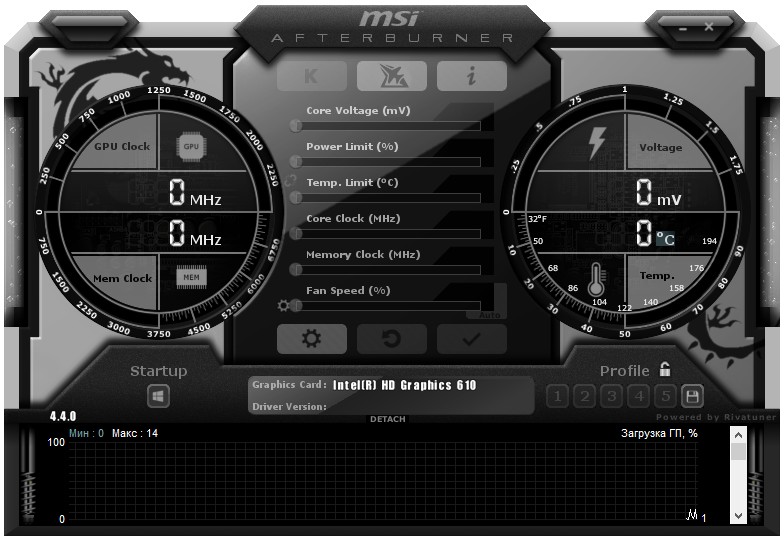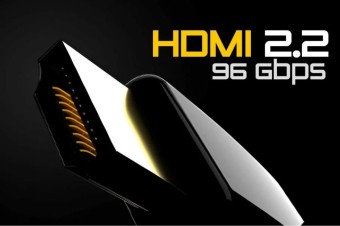How to overclock a graphics card?
We independently test the products and technologies that we recommend.

Preparing for overclocking
Theoretically, overclocking a graphics card resembles the same procedure with a central processor : you need to find the optimal balance between the frequency of processor cores (graphic core), RAM (video memory) and supply voltage (power consumption limit). In fact, unlike processor overclocking, which is done through the motherboard BIOS menu, graphics card overclocking is carried out through Windows applications.
Almost all major graphics card vendors have their own proprietary overclocking utilities: ASUS GPU Tweak II, Palit ThunderMaster, Sapphire TriXX, etc. The most popular due to their versatility (they support overclocking of their own and other models) are the paid EVGA Precision (sold on Steam) and Free MSI Afterburner. It is on the example of the second that we will give advice on overclocking.
 |
In addition to the overclocking utility, you will need a “warm-up” application that loads the graphics card to the eyeballs. It can be MSI Kombustor, AIDA64, FurMark, Unigine Valley or any modern demanding game, preferably with a built-in benchmark. The advantage of the gaming benchmark is that it repeats the same scene over and over again, which allows you to accurately measure the frame rate before and after overclocking. In games without a benchmark, it is almost impossible to repeat the same actions twice.
General principles
When you launch MSI Afterburner for the first time, you must uncheck the box next to "Startup" so that the programme does not start automatically after the operating system boots. This will allow, in case of unsuccessful overclocking and freezing of the PC, simply reboot the system and return the graphics card settings to standard values.
 |
Beginning overclockers are advised to overclock exclusively in safe mode — without increasing the voltage of the graphics chip. By default, changing the voltage in Afterburner is disabled. If you still decide to experiment with voltage, in the "Settings — General" menu, activate the "Unlock voltage control" option and restart Afterburner.
 |
The management of the maximum power supply (“Power Limit” slider) and the maximum allowable temperature (“Temp. Limit”) is blocked in Afterburner for most modern video cards. You can use it either in proprietary configuration applications from the manufacturer of the graphics chip (this will be discussed below), or by flashing to an unofficial BIOS version.
The main sliders of interest to us in Afterburner are “Core Clock” (graphic core frequency) and “Memory Clock” (video memory frequency). We will raise them. You can find out the approximate overclocking potential of your graphics card model from text reviews on specialized hardware sites or video reviews on YouTube.
 |
It is also worth considering that overclocking is always a lottery: the same graphics card model, depending on the success of a particular instance (ASIC current leakage rate), can overclock better or worse. Reviewers often receive test samples directly from manufacturers. For tests, of course, specimens of the best quality are selected, while everything goes to retail. Accordingly, it is better to set the overclocking frequency of the core and memory a little lower than the one claimed by the browser.
In Afterburner, the real real memory frequency is indicated (for example, for the GeForce GTX 1050 Ti it is 1750 MHz), while in the characteristics of the graphics card and in the reviews — the effective frequency is four times higher (7000 MHz). Accordingly, if you want to get a memory overclock of 400 MHz, as in the review, then you need to add only 100 MHz to Afterburner.
After setting the overclocking frequency, click the "Apply" button. If you make a mistake, click "Reset". Now we need to test the efficiency and, most importantly, the stability of overclocking. This can be done using the aforementioned "warm-up" utilities or games. It is recommended not to exceed 85°C (shown in the graphs at the bottom of the Afterburner window). In case of exceeding the norm, either increase the speed of the fans of the graphics card (the "Fan Speed" slider), or lower the overclocking frequency a little so that the PC remains quiet further.
 |
If you overdo it with the overclocking frequency, Windows may give an error “The video driver stopped responding and has been restored” or even show a “blue screen” (BSOD). In this case, simply restart the PC with the button on the case. By trial and error, having chosen the optimal combination of increased frequency and stable operation under load, click the "Save" and "Startup" buttons so that Afterburner starts up with the OS immediately with active overclocking in the future.
AMD Radeon Features
On average, Radeon graphics cards are more power-hungry and hotter than GeForces from the same year. Therefore, they have a strict limitation of the maximum power. Sometimes, it comes to the ridiculous: some Radeon RX 480 models, such as HIS, operate at a frequency lower than the claimed one by default. And all because the manufacturer has set a too tight power limit.
You can remove the restriction using the Crimson application (the old name for Catalyst), which is part of the AMD graphics driver package. The Radeon 400, 500 and Vega models are configured by the WattMan function, while the Radeon 7000, 200 and 300 series are configured by the OverDrive function. As a result, the maximum allowable overclocking frequency and the heating level of the graphics card increase. Therefore, the temperature should be monitored even more carefully.
 |
NVIDIA GeForce Features
The GeForce 600, 700, 900 and 1000-series video cards, in addition to the nominal core frequency, also have the Boost automatic overclocking frequency. Simply put, if the temperature and power consumption are within normal limits, the graphics card overclocks itself.
The latest NVIDIA 1000-series has especially strong auto-overclocking — at 300-500 MHz. This partly eliminates the benefits of manual overclocking: we increase the nominal value, but the real frequency still cannot exceed the Boost mark. Overclocking video cards without an additional power connector is especially unpromising: GT 1030, GTX 1050 and 1050 Ti.
The GeForce 600, 700 and 900-series models have weaker auto-overclocking, and the temperature and power consumption limits are less strict. Therefore, it makes sense to overclock these video cards, unlike the 1000-series.
 |
farewell message
In order to avoid possible overheating and subsequent breakdown of the graphics card in the process of experiments with overclocking, it is necessary to increase ventilation inside the PC. To do this, you can either increase the speed of the case fans, or temporarily remove the side wall of the case. Once a balance between increased frequency and tolerable heat is found, the wall can be returned to its place. Also, if your graphics card is more than three years old (that is, the warranty period has already expired), it is recommended to replace the thermal paste. And if more than five years, then also thermal pads (for example, on the Arctic Thermal Pad).
Which video cards are more powerful: AMD Radeon or NVIDIA GeForce? How many gigabytes of video memory do you really need?
We compare 18 graphics card brands and their main product lines.
Assembling a PC is as easy as building a LEGO set.
The keyboard does not respond to pressing and the mouse cursor does not move? Everything is solved!
Accurate scales, an electric grill, a set of knives and a couple of other kitchen appliances for a cookery gift.
















